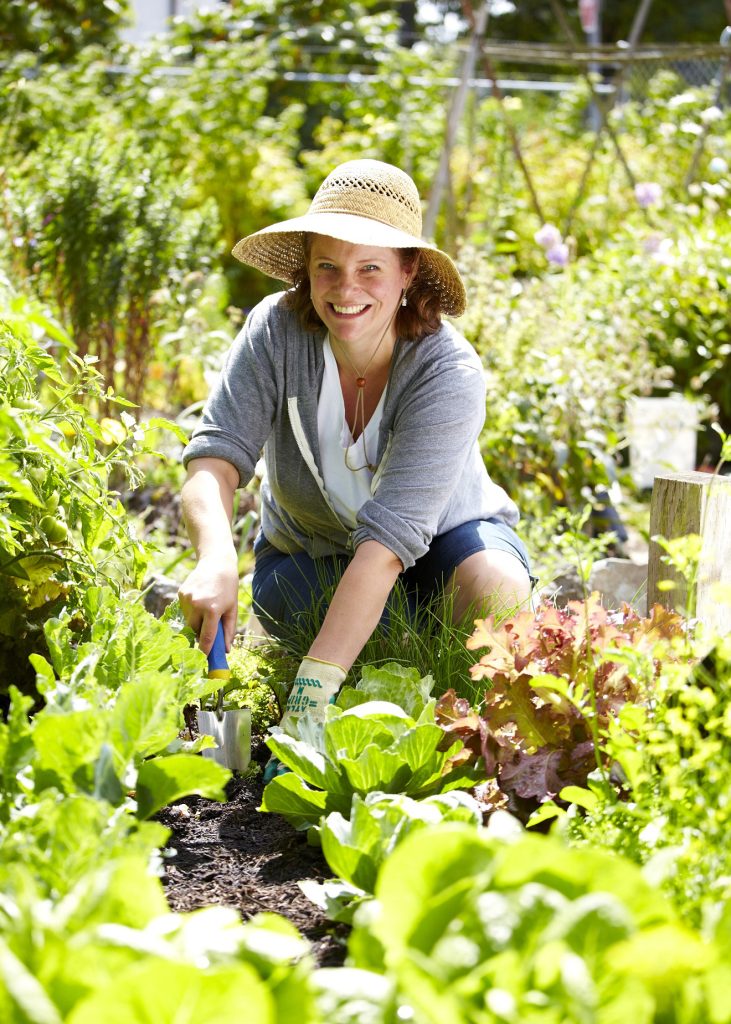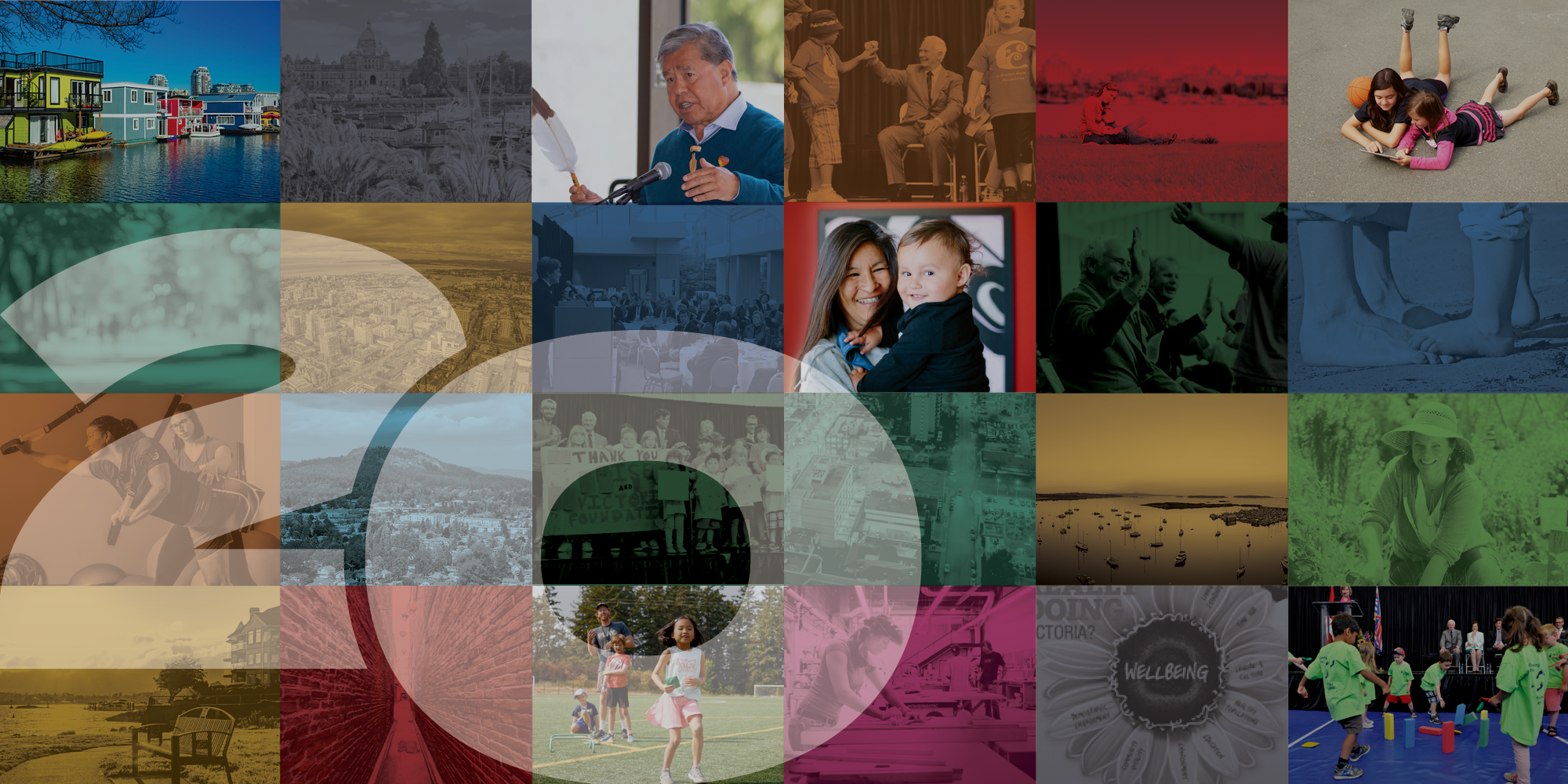
2025 Feature Article
What’s next for Victoria’s Vital Signs?
A retrospective on 20 impactful years!
When Victoria’s Vital Signs was first published in 2006, few people could predict the significance this “annual check-up” would grow to have in identifying the community’s pressing issues. Nor could they have guessed the wide-scale change it would catalyze in the capital region—from a food security network to physical literacy initiatives, and more.
Since its first edition, Vital Signs has become a steadfast watchdog for all areas of community wellbeing. It turns complicated statistics into easy-to-use information. It spotlights the work of courageous impact organizations. It’s relied upon by civic leaders and decision-makers for a deeper understanding of how Greater Victorians perceive their daily lives.
The key reason for creating Victoria’s Vital Signs was to better inform the Victoria Foundation on community issues. The program was inspired by a similar report from the Toronto Foundation and coordinated nationally by Community Foundations of Canada.
“As a small community foundation at the time, we didn’t have a lot of grant money to give,” recalls CEO Sandra Richardson. “We needed the community’s input on what we should be funding, in order to make the best use of the philanthropy we had within us.”
When it launched, Vital Signs brought the Foundation into focus as a hub for the region’s philanthropy. There was a dramatic increase in charitable support that set the bar for a new kind of engagement across Canada between the people who care, the causes that matter, and the community foundations that serve them.
Bringing Victoria’s Vital Signs to life
In Fall 2006, the year of the Victoria Foundation’s 70th anniversary, the inaugural Victoria’s Vital Signs was unveiled to around 150 people at a launch event held at the University of Victoria. Guest speakers included then-CRD Chair Alan Lowe and various community leaders. The launch was a resounding success.
Sharlene Smith, project manager for the first six Victoria’s Vital Signs, says it was a highlight of her career. Leading a five-person team, Sharlene was involved with everything from the board proposal and trademark application to managing partnerships, leading project meetings, and researching and writing the content.
Many of the key indicators measured in the report today – in areas such as Housing, and Health & Wellness – were identified at a forum held at the Hotel Grand Pacific, with help from prominent community leaders, some of which later formed a Vital Community Network.
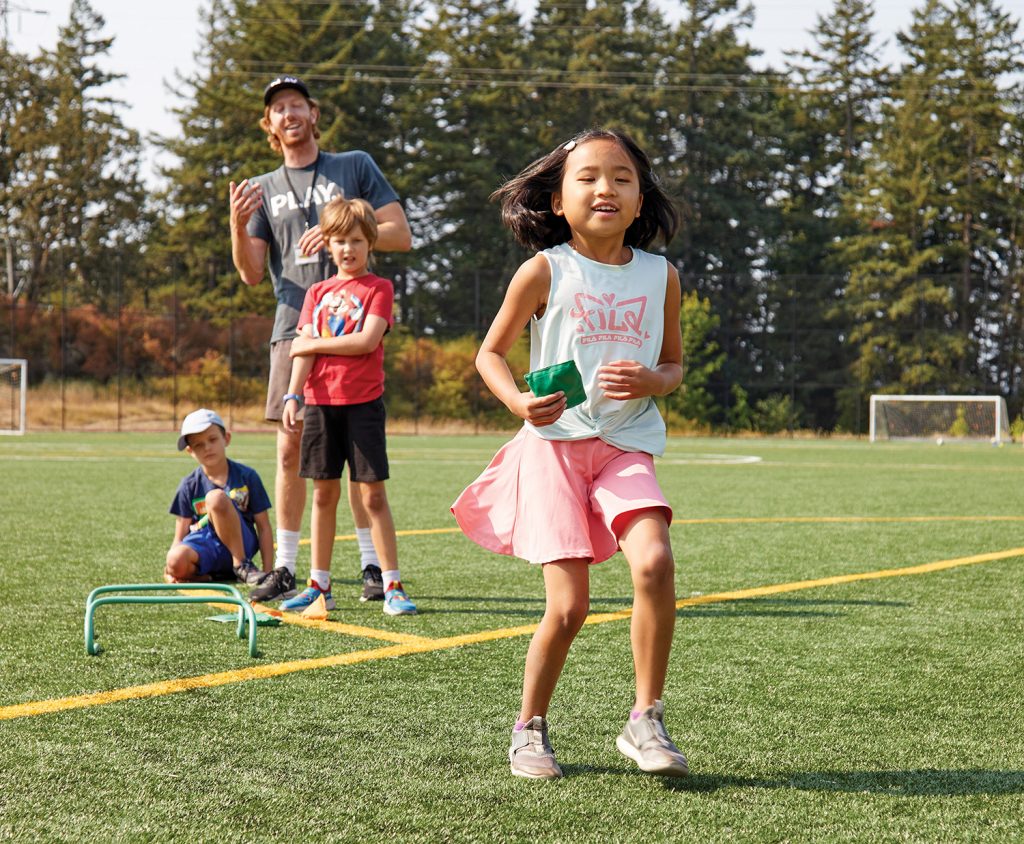
Sharlene says securing data for the report was a challenge, as “data wasn’t as readily collected and available twenty years ago.” These indicators had to be collected from various organizations in the region. Then, through an on-line survey, members of the community rated the indicators in each issue area using a 5-star-based grading system, which would go on to become the letter grade system used today.
Sharlene says there isn’t another single thing that could have increased awareness of the Foundation and its understanding of community issues to the extent that Vital Signsdid, and it “led to significant financial growth over the past 20 years, which ultimately increased granting and services to the community.”
Alongside the swell of donor support, Vital Signs encouraged organizations to start collecting their own data. The report caught the attention of public servants and elected officials, earned extensive media coverage, and propelled the Victoria Foundation to be regarded as a national leader.
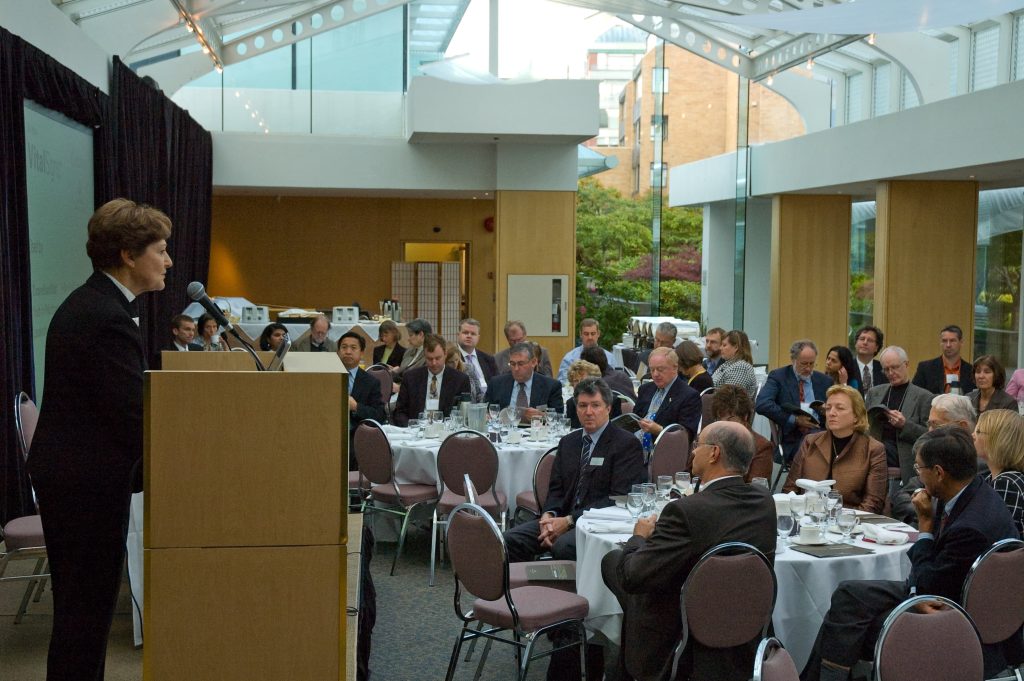
Twenty years of milestones
The introduction of the Vital Signs community survey in 2006 was a game-changer for the Foundation. Knowing how community members perceive key aspects of the region they call home has since guided the Foundation to further hone its granting process to help tackle some of the most pressing issues.
Vital Signs’s findings also pushed the Foundation toward a “trust-based philanthropic” approach in its work – a model of granting that prioritizes equity and builds relationships through transparency and humility – much of which is reflected in these milestones:
ABC’s of physical literacy
In its early years, Vital Signs revealed that children’s health was one of the more pressing issues in the region. In 2012, it was found that vulnerable children in the community faced barriers to regular exercise.
That year, the Foundation launched the Smart & Caring Community Fund (now the Vibrant and Caring Community Fund), responding to a challenge set by then-Governor General of Canada David Johnston, also a former Lieutenant Governor of BC. The fund would respond to major community needs, as identified by Vital Signs.
The first initiative the fund supported was called the ABCs of Physical Literacy, run by the Pacific Institute of Sport Education (PISE). CEO Robert Bettauer says the program helps children gain confidence while being physically active.
“We’ve witnessed the incredible joy and growth of thousands of children over the past decade as we’ve introduced the ABC’s – agility, balance, and coordination – in schools and programs throughout Greater Victoria,” he explained.
The Cridge Centre for the Family, Western Canada’s oldest registered charity, was one of the first organizations to host the program. A commemoration was held at PISE to celebrate the launch of the ABCs at the Cridge Centre – with The Honourable David Johnston attending as the guest of honour. Robert says it was “a memorable and proud day at PISE!”
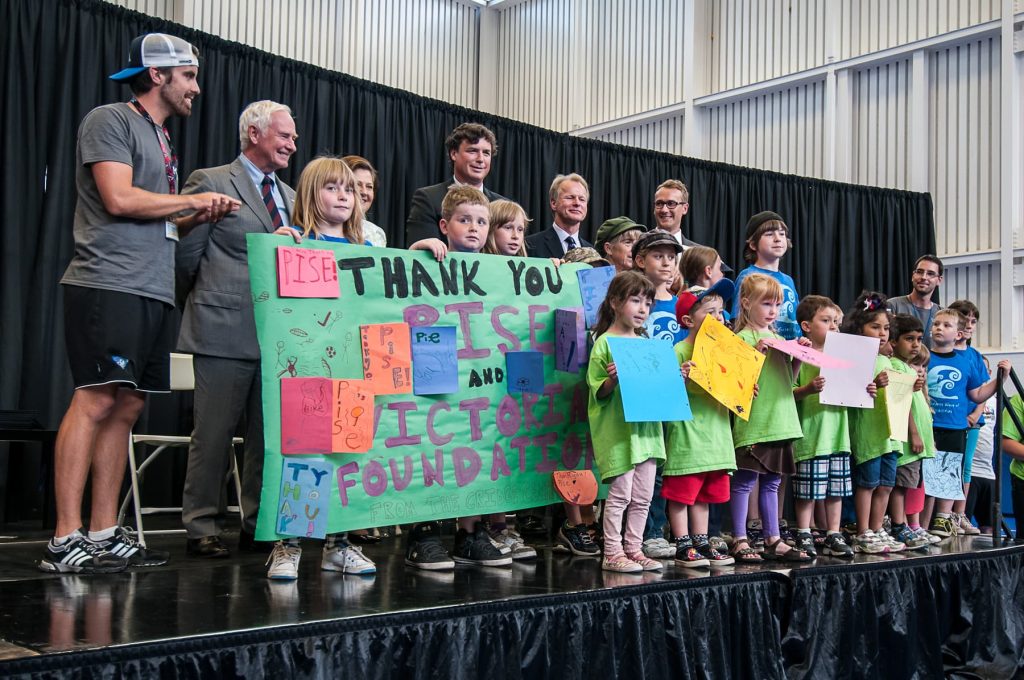

A regional food security hub
In 2013, results from the Vital Signs survey highlighted the critical issue of food insecurity in the capital region.
Rudi Wallace, former Grants Manager at the Foundation, says Vital Signs “acted as a call to action, catalyzing a more collective approach to strengthening food security by bringing new and critical partners into the work.”
Rudi, who was the Director of Food Security at the Mustard Seed Street Church at the time, was key to finding a path for food organizations to work together. The Foundation stepped in with long-term support and partnerships to help create a new Food Strategy Roadmap – a vision for how the community could collaborate, which led to a Regional Food Bank Collective.
In 2017, the community opened a centralized 22,000 square-foot warehouse called the Food Security Distribution Centre, in Esquimalt, operated by the Mustard Seed with the Capital Region Food and Agriculture Initiatives Roundtable.
Today, the centre supports critical initiatives from Victoria Community Food Hub Society that help rescue produce from grocery stores, train food entrepreneurs, and offer an online market for local produce. Rudi says the warehouse was a culmination of years of relentless work; a “significant non-profit community asset with a far-reaching impact.”
Taking action on accessibility
In 2017, the Vital Signs report spotlighted the barriers people with disabilities face in the capital region. That year at UVic, the Victoria Foundation held a forum on disability with CanAssist – a powerful organization that creates assistive technologies to improve accessibility for people with these challenges.
Victoria Foundation CEO Sandra Richardson says the forum heard from Dr. Nigel Livingstone about a project, called ‘James the Butler,’ to create a specialized wheelchair for a local man who was recently paralyzed. The Victoria Foundation funded the project and worked with him to develop the technology.

Indigenizing the granting process

“The man wanted his wheelchair, for example, to be able to access the front door of a sushi restaurant across the street from his home, open the door, and take away some sushi,” said Sandra. “CanAssist made the wheelchair for him, and he managed to do just that.”
Sandra says the event brought the whole disability community together to talk boldly about these barriers, “including what challenges are in our own businesses and charities, and where the funding was most needed.”
It led the Foundation to focus more regular support toward disability initiatives, like OneAbility, which improves sports and recreation for disabled people, and Nigel House – a Broadmead Care home purpose-built for disabled residents.
Over the years, Vital Signs has spotlighted the need for more social supports for culturally diverse communities.
Monumentally, T’esóts’en, or Patrick Kelly, a member of the Leq’a:mel Nation and longtime resident of Victoria, became the Foundation’s first Indigenous Board Chair in 2016, and the first Indigenous chair of any community foundation in Canada.
For over 40 years, Patrick has devoted his life to strengthening Indigenous relations in many advising, consulting, and volunteer roles with both the public and private sectors. He brought an invaluable lens to his leadership, which transformed how the Foundation engages with culturally diverse communities.
Other board members have included Carey Newman – the creator of the Witness Blanket, Tamara Napoleon, who recently served as Board Chair from 2023 to this year, and Ruth Young, Director of Indigenous Initiatives with the Faculty of Law at the University of Victoria.
Indigenous leadership at the Foundation led to establishing the Indigenous Priorities Fund in 2022, an initiative that supports social, cultural, and legal infrastructure in Indigenous communities, with granting decisions led by an all-Indigenous advisory.
Through this initiative, granting decisions are better able to reflect the needs and priorities of these communities.
The future of Victoria’s Vital Signs
Sandra Richarson remembers being awestruck in 2006 when she saw someone had left a copy of the first Victoria’s Vital Signs on a bus seat. “I couldn’t believe it. I wondered how it got there,” she said.
Since that first issue, the annual check-up has kept the Victoria Foundation listening to the community, curious about its needs, and ready to help fortify areas that need the most strength. It’s expanded the Foundation’s capacity to create partnerships, fund collaborations, and to help organizations coordinate to tackle solutions.
Vital Signs, like the Foundation, continues to evolve with the times. Over the years, it’s expanded dramatically and now includes this vibrant digital companion that you’re currently reading. This platform is full of bonus content and insights, fit for modern computers and mobile devices.
Looking to the future, Sandra says it’s time for the Foundation to connect again with the community, similar to the first edition, to truly understand what form it wants the next Vital Signs to take.
“We’re able to say, ‘We’ve done this for twenty years, we can show you the differences it’s made. But if we want to make an even bigger difference, what would that look like?’”
Sandra says any evolution of Victoria’s Vital Signs is on the table.
“Next year, we might have another written report, or it could be something else. Will it stay just a snapshot in time? Is there a role Artificial Intelligence could play? Whatever form it takes, it will be rooted in the community.”
